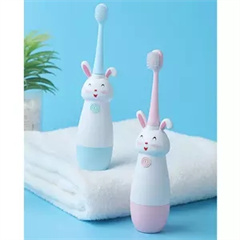Choosing the right toothbrush is important for maintaining good oral hygiene. Here are some factors to consider when selecting a toothbrush:
- Bristle Type: Toothbrushes typically come with soft, medium, or hard bristles. Dentists generally recommend using a toothbrush with soft bristles. Hard bristles can be too abrasive and cause damage to the enamel and gums.
- Size of the Head: Choose a toothbrush with a head size that fits comfortably in your mouth and can reach all areas of your teeth. A smaller head might be more effective in reaching difficult-to-access areas.
- Bristle Texture: Toothbrushes can have various bristle textures, such as flat, dome-shaped, or rippled. The texture should feel comfortable in your mouth and effectively clean your teeth.
- Handle Shape and Grip: The handle should be comfortable to hold and provide a secure grip. Some toothbrushes have ergonomic handles designed to make brushing easier.
- Manual vs. Electric: Both manual and electric toothbrushes can be effective. Electric toothbrushes, particularly those with oscillating-rotating or sonic technology, can provide more consistent and thorough cleaning. They might be especially helpful for people with limited dexterity.
- Replaceable Heads (Electric Toothbrushes): If you opt for an electric toothbrush, consider one with replaceable brush heads. This can be more cost-effective and environmentally friendly in the long run.
- ADA Seal of Approval: Look for toothbrushes that have received the American Dental Association (ADA) Seal of Acceptance. This indicates that the toothbrush has been tested and meets certain quality and safety standards.
- Your Oral Health Needs: Consider any specific oral health needs you have. For example, if you have sensitive gums, a toothbrush with extra soft bristles might be more comfortable.
- Children’s Toothbrushes: If selecting a toothbrush for a child, choose one with a smaller head and a handle suitable for their hand size. Many children’s toothbrushes also come in fun designs to make brushing more appealing.
- Replace Regularly: Regardless of the type of toothbrush you choose, make sure to replace it every 3 to 4 months or sooner if the bristles are frayed. Worn bristles are less effective at cleaning teeth.
- Personal Preference: Ultimately, the toothbrush that works best for you is one that you feel comfortable using and that helps you maintain proper oral hygiene.
Remember, proper brushing technique is just as important as choosing the right toothbrush. Be sure to brush for at least two minutes, using gentle circular motions, and paying attention to all surfaces of your teeth, including the gums and tongue.
If you’re uncertain about which toothbrush to choose, you can consult your dentist or dental hygienist. They can provide personalized recommendations based on your oral health needs and preferences.








